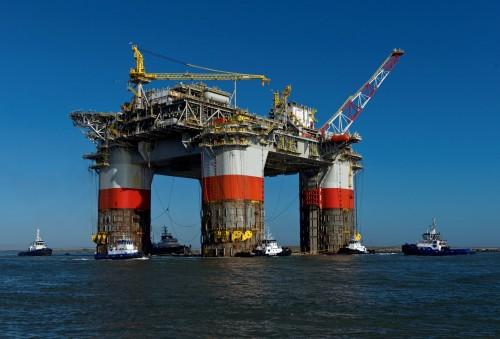
US EXPORTS UP

Petroleum product exports averaged 4.1 million barrels per day (b/d) in the first four months of the year, the latest monthly data available. This was an increase of 0.5 million b/d over the same time last year. Product imports are also higher than last year, but to a lesser extent, leading to an increase in net petroleum product exports (Figure 1). Import and export patterns vary by region (Figure 2), with most exports leaving from the Gulf Coast (PADD 3), and imports coming to the East Coast (PADD 1). Record high refinery runs and increased global demand for petroleum products from the United States continue to push net exports higher.
More than half of the country's refinery capacity is located in PADD 3, and roughly 75% of U.S. product exports are sent from the region. Through April, Gulf Coast petroleum product exports were up 444,000 b/d compared with the same time last year. Gasoline, distillate, and jet fuel exports combined accounted for 40% of the increase. The higher gasoline and distillate exports were sent to countries in the Western Hemisphere, while gasoline exports to Africa have decreased slightly. Jet fuel exports have primarily increased to Western Europe, Central America (including Mexico), and South America, and to a lesser extent Africa. Propane and naphtha exports are each more than 150,000 b/d higher than last year, and are primarily sent to Asia.
Product imports remain an important source of supply on the East Coast, supplementing in-region refinery production and receipts from the Gulf Coast and to a lesser extent, the Midwest (PADD 2). Motor gasoline product supplied has been 71,000 b/d higher so far in 2015 compared with last year, and imports of total motor gasoline (including both blending components and finished gasoline) have increased by 103,000 b/d to meet demand.
Petroleum product markets on the West Coast are typically tightly balanced, with in-region refinery production nearly evenly matched with demand. The West Coast is largely isolated from the rest of the country's petroleum markets because there are no pipelines that cross the Rocky Mountains. However, in recent years, the region's supply of distillate fuel has exceeded demand and, as a result, exports have increased. West Coast distillate exports averaged 117,000 b/d so far this year, in line with the previous two years and 37,000 b/d higher than in 2012. During times of supply disruptions, imports to the West Coast often increase to replace lost supply from in-region refineries, as has been the case so far in 2015.
Following an outage caused by an explosion and fire at ExxonMobil's Torrance, California refinery in mid-February, gasoline imports to the West Coast increased, and have averaged 37,000 b/d so far this year, more than double compared with the same time last year.
Over the past decade, domestic output of petroleum products has grown significantly, while consumption has declined, driving a major increase in net product exports (Figure 1). The future trend in net exports will depend on underlying trends in both output and consumption of petroleum products. Future output will reflect both U.S. refinery runs and the production of hydrocarbon gas liquids outside of refineries. Future domestic consumption will reflect prices, economic activity, and policies such as fuel economy standards for both light- and heavy-duty vehicles. So long as domestic output of petroleum products grows faster than their consumption, net petroleum product exports will continue to rise.
U.S. average gasoline and diesel fuel prices decrease
The U.S. average retail price for regular gasoline decreased one cent from the previous week to $2.80 per gallon as of June 29, 2015, 90 cents per gallon less than the same time last year. The Rocky Mountain price increased less than a penny to remain $2.79 per gallon. The Gulf Coast price was down three cents to $2.54 per gallon. The West Coast price decreased two cents to $3.31 per gallon. The Midwest price fell one cent to $2.74 per gallon. The East Coast price decreased less than a penny to remain $2.73 per gallon.
The U.S. average price of diesel fuel decreased two cents from the week prior to $2.84 per gallon, a $1.08 per gallon lower than the same time last year. The West Coast and Gulf Coast prices each fell three cents to $3.07 per gallon and $2.73 per gallon, respectively. The Rocky Mountain and Midwest price both decreased two cents to $2.78 per gallon, and $2.73 per gallon, respectively. The East Coast price was down one cent to $2.95 per gallon.
Propane inventories gain
U.S. propane stocks increased by 1.6 million barrels last week to 83.5 million barrels as of June 26, 2015, 27.3 million barrels (48.6%) higher than a year ago. Gulf Coast inventories increased by 0.8 million barrels and Midwest inventories increased by 0.6 million barrels. Rocky Mountain/West Coast inventories increased by 0.2 million barrels while East Coast inventories remained unchanged. Propylene non-fuel-use inventories represented 6.2% of total propane inventories.
eia.gov




